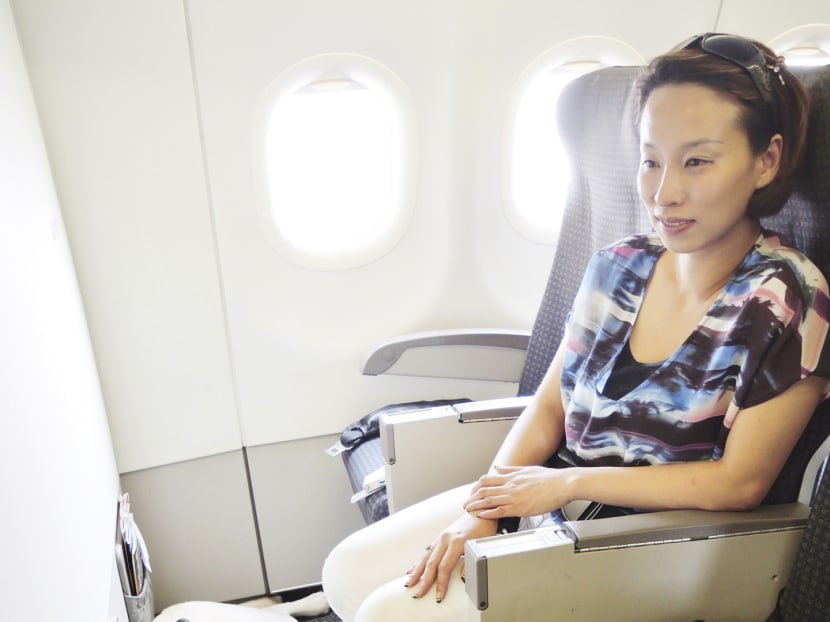Tigerair trials letting guide dogs on board
SINGAPORE — Tigerair is looking into the feasibility of allowing guide dogs to travel with their visually-impaired owners, a year after it made headlines for refusing a guide dog on board a flight.

Tigerair flew Ms Cassandra Chiu and
her guide dog, Esme, to Phuket as part
of the trial. PHOTO: TIGERAIR
SINGAPORE — Tigerair is looking into the feasibility of allowing guide dogs to travel with their visually-impaired owners, a year after it made headlines for refusing a guide dog on board a flight.
Working with the Guide Dogs Association of the Blind, Tigerair yesterday flew Ms Cassandra Chiu and her guide dog, Esme, to Phuket as part of a trial to test whether such a policy could be implemented.
In December 2012, Tigerair refused businessman Kua Cheng Hock’s request to allow his Labrador guide dog to board a flight, becoming the first Singapore-based air carrier to do so.
Speaking to the media yesterday, Ms Chiu said she was “very happy that Tiger is making travel more accessible for people who have disabilities”.
The 35-year-old counsellor said guide dogs are well trained and would sleep on a flight. They do not cause any disturbance to other passengers and are not allowed to eat or drink anything for 12 hours before flying, she added. The dogs are kept hydrated with ice cubes to minimise their need to relieve themselves, but as a precaution, guide dog owners usually lay an absorbent mat beneath their pet, said Ms Chiu, who is a frequent traveller.
Addressing the 2012 incident at a media briefing yesterday, Tigerair chief operating officer (COO) Ho Yuen Sang said the airline did not permit guide dogs on flights in the past due to considerations such as the religious and individual sensitivities of some passengers. There were also concerns over safety procedures during flight turbulence, he added.
“Allowing guide dogs on board Tigerair flights would be in line with our care and concern for customers requiring special assistance,” said Mr Ho, explaining the reasons for the trial.
Earlier this year, the budget airline had invited the Singapore Association of the Visually Handicapped and The Singapore Association of the Deaf (SADeaf) to train its cabin crew on how to better assist passengers with visual and hearing impairments. In the case of flight turbulence, the cabin crew would secure the guide dog to an aircraft seat to ensure that the dog is safe.
Yesterday, Tigerair revealed that it was working with SADeaf to find out how passengers with hearing difficulties could be notified of announcements on board a flight and that it was also looking into how the airline’s assistance to the wheelchair-bound could be improved.
“We hope to enhance the mobility of visually impaired passengers and empower them to access more destinations served by Tigerair ... (and) continue to take proactive steps to improve our capabilities to assist customers with special needs,” said Mr Ho.






